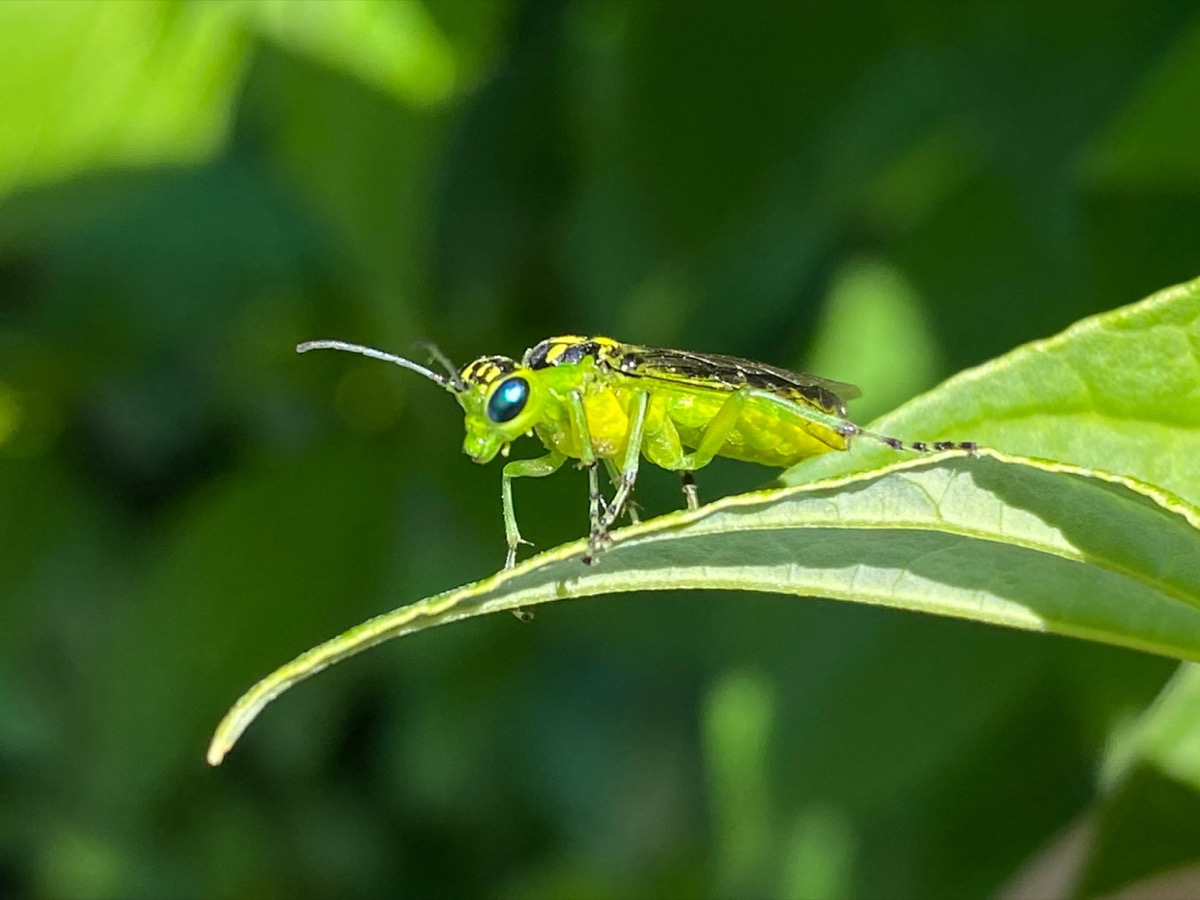Characteristics
- Small to medium size (5 to 12 mm)
- Body generally black, brown, or with yellow markings
- Filiform antennae with 7 to 10 segments
- Transparent wings with well-developed venation
- Saw-shaped ovipositor used to cut into plant tissues
Habitat
Tenthredinidae are found in:
- Forests, hedgerows, edges, flowering meadows
- Gardens, orchards, wetlands
- Anywhere their host plants grow
Biology
- Phytophagous larvae, living openly on foliage
- Resemble caterpillars, but with 6 or more pairs of prolegs
- Some species are gregarious, others solitary
- Often univoltine (one generation per year), but sometimes bivoltine
- Host plants include deciduous trees, herbaceous plants, shrubs
Common Genera
- Tenthredo – Type genus, many colorful species active in summer
- Nematus – Larvae feed on willows, birches, currants…
- Rhogogaster – Bright green, active on low vegetation
- Allantus, Fenusa, Pristiphora – Other common or specialized genera
Distinctive Features
- Very high species diversity
- Some species can cause significant defoliation
- Identification at the species level is often difficult (requires examination of genitalia or ovipositor)
- Larvae sometimes protected from predators by jerky movements or repellent secretions
